What’s The Difference Between Black Bears and Grizzly Bears?
Bears are some of the most fascinating and iconic creatures in North America, with two of the most well-known species being the black bear (Ursus americanus) and the grizzly bear (Ursus arctos horribilis), a subspecies of the brown bear.
Despite their similarities, these two bear species have distinct differences in their appearance, behavior, habitat, diet, and interactions with humans.
Understanding these differences is crucial for wildlife enthusiasts, hikers, anglers, campers, and anyone interested in conservation.
Black Bears vs. Grizzly Bears: Understanding the Key Differences
Physical Differences Between Black Bears and Grizzly Bears
The easiest way to distinguish between black bears and grizzly bears is to look at their physical features. From their size and build to face shape, ears, and tracks, these characteristics will help you determine whether it’s a black bear or grizzly.
Size and Build: Grizzly Bears
Grizzly bears are significantly larger than black bears. Adult males typically weigh between 400 and 800 pounds, with some even reaching up to 1,500 pounds in extreme cases. Grizzlies can stand up to 8 feet tall on their hind legs and measure around 3 to 5 feet at the shoulder when on all fours.
Grizzly bears also have a more pronounced shoulder hump, arguably their most distinguishing characteristic, formed by strong muscles used for digging. As a result of this large shoulder hump, grizzlies typically have a rump that’s lower than their front shoulders.
Size and Build: Black Bears
In contrast, black bears are much smaller, with males generally weighing between 150 and 600 pounds and standing 5 to 7 feet tall on their hind legs. Their shoulder height on all fours is usually around 2 to 3.5 feet.
Black bears have no shoulder hump whatsoever, and their rump is higher than their front shoulders.
- Grizzly Bears:
- Up to 8 feet tall standing up
- 3-5 feet on all fours
- Large shoulder hump
- Low rump
- Black Bears:
- 5-7 feet tall standing up
- 2-3.5 feet on all fours
- No shoulder hump
- High rump
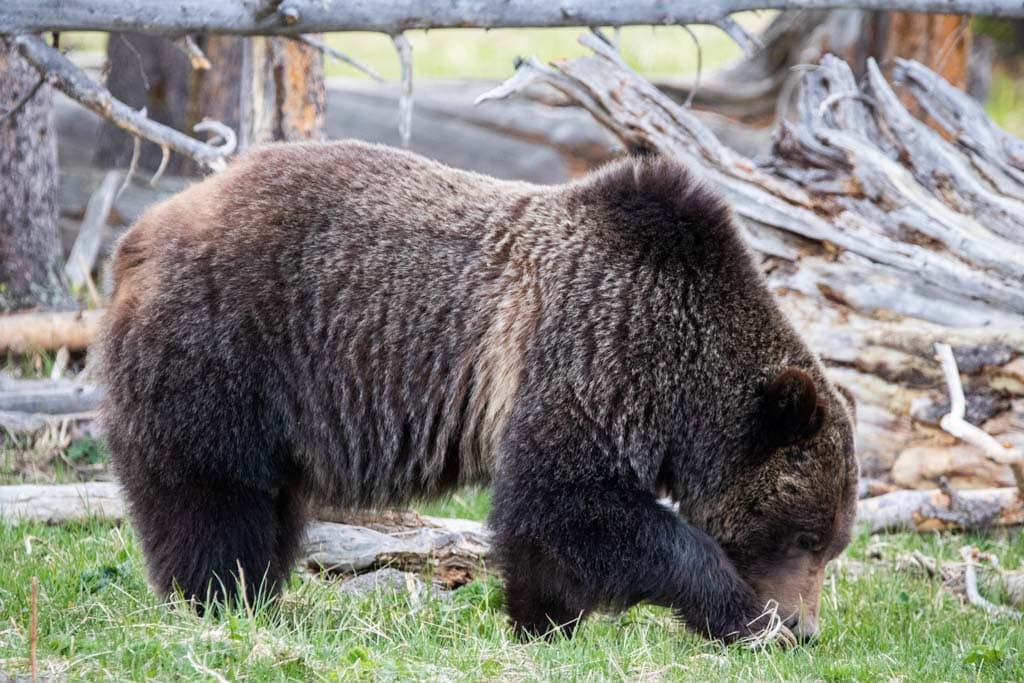
Facial Structure, Claws, and Tracks: Grizzly Bears
Grizzly bears have a concave or “dished” facial profile, giving them a distinctive look. Their ears are short and rounded, while their claws are long (up to 4 inches), slightly curved, and designed for digging up roots, insects, and rodents.
The front toes of grizzlies are located quite close together and form a relatively straight line. If you draw a line from under the big toe and along the top of the paw pad, it usually runs below the little toe.
Facial Structure, Claws, and Tracks: Black Bears
Black bears, on the other hand, have a straighter facial profile and long, oval-shaped ears. Their claws are shorter (less than 2 inches) and more curved, making them excellent climbers.
Black bear front toes are spaced more apart, forming a more arced pattern. When drawing a line from the under the big toe and along the top of the paw pad, the line runs through the upper half of the little toe.
- Grizzly Bears:
- Dished face profile
- Short, rounded ears
- Long, slightly curved claws
- Toes are close together and form a relatively straight line
- Black Bears:
- Straight face profile
- Long, oval-shaped ears
- Short, curved claws
- Toes are more separate and form an arced pattern
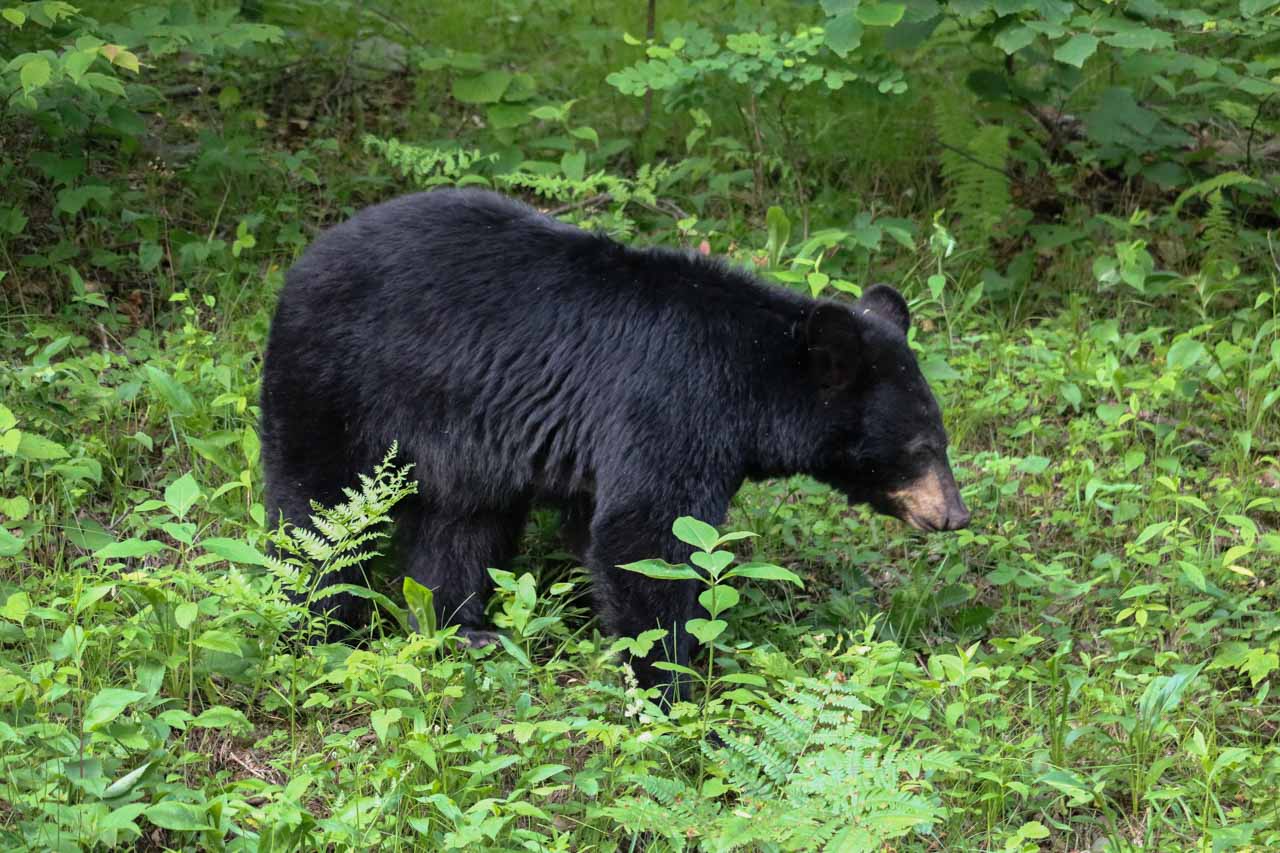
Fur Coloration: Grizzly Bears
Despite their names, black bears and grizzlies exhibit a wide range of fur colors.
Grizzly bears typically have brown fur with lighter tips, giving them their characteristic “grizzled” appearance, but their color can also range from blonde to nearly black.
For Coloration: Black Bears
Black bears can have black, brown, cinnamon, blonde, or even white fur, depending on their region and genetics.
Because fur color may not always be a good indicator of whether it’s a black or grizzly bear, it’s important to know the other distinguishing physical features between both species. See the graphic below.
- Grizzly Bears:
- Brown fur with lighter tips, possibly ranging from blonde to almost black
- Black Bears:
- Black, but possibly also brown, cinnamon, blonde, or even white fur
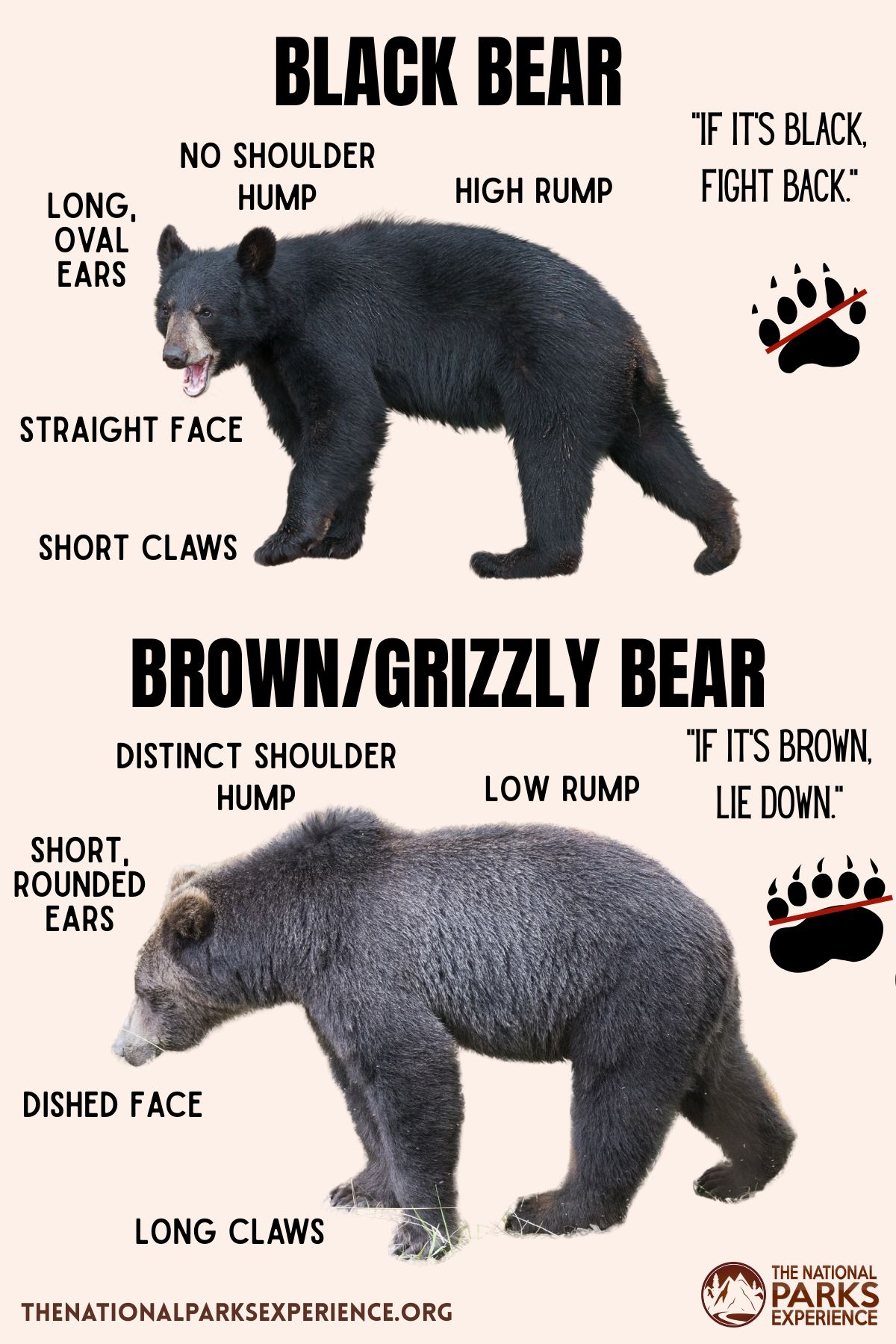
Habitat and Distribution
Black bears have the broadest distribution of any bear species in North America, inhabiting forests, swamps, coasts, and mountainous areas across Canada, the United States, and even parts of Mexico.
Highly adaptable, they can be found in at least 40 states, in both remote wildernesses and areas near human development.
Grizzly bears, in contrast, are more restricted in their range. Historically, they roamed much of North America, but today, they are primarily found in Alaska, western Canada, and isolated regions of the northwestern United States, including Montana, Wyoming, Idaho, and Washington.
Grizzlies prefer open spaces such as tundra, subalpine meadows, forest edges, and river valleys, where they can roam large distances in search of food.
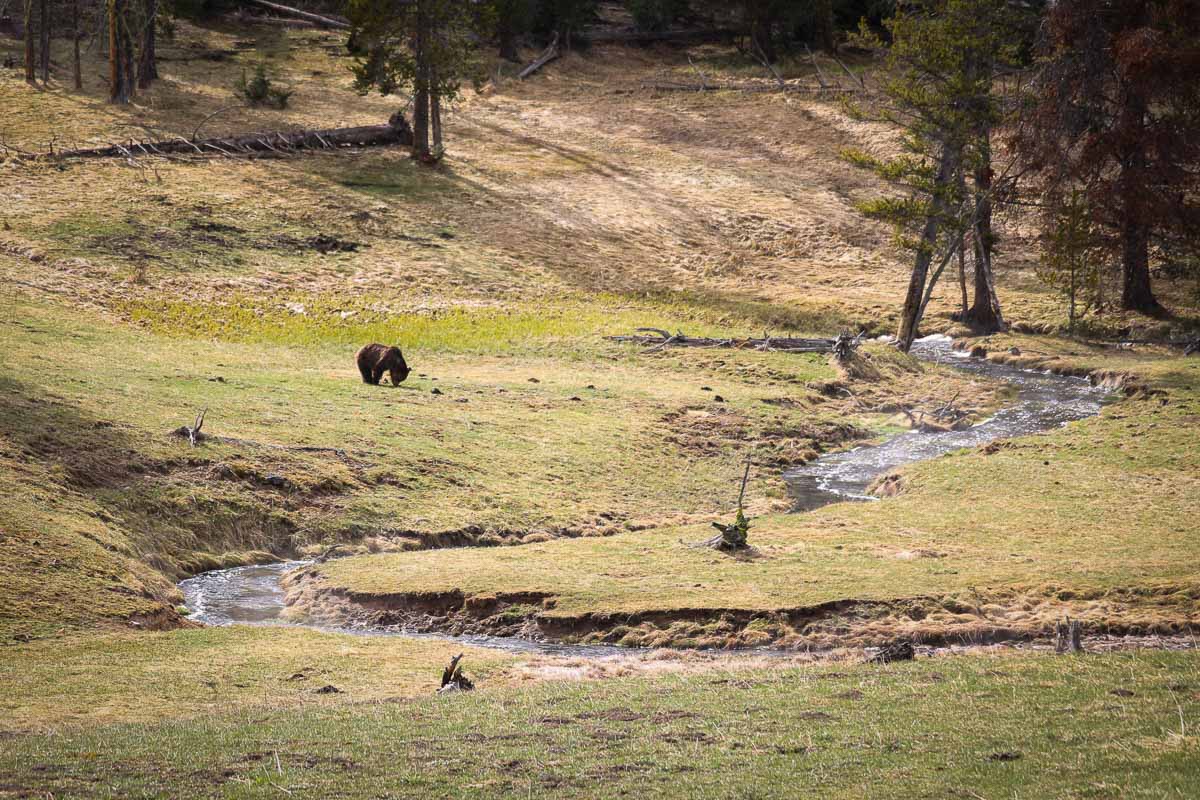
Diet and Foraging Behavior of Black Bears and Grizzly Bears
Both black bears and grizzlies are omnivorous, consuming a mix of plants, fruits, nuts, insects, fish, and small mammals. However, there are notable differences in their diets and hunting strategies.
Grizzly bears have a more protein-rich diet and are more likely to hunt large prey, especially the calves of deer, elk, and moose. They also often feed on carrion. Additionally, brown bears, of which grizzlies are a subspecies, are well-known for their fishing skills, particularly during salmon runs in Alaska.
Their large claws combined with their large shoulder hump also make their excellent diggers, allowing them to forage for roots, forbs, moths, and other insects.
Black bears, while capable of hunting, rely more on smaller animals like insects and plant-based foods, such as berries, nuts, and sedges. They are excellent foragers and are more likely to scavenge from human food and garbage or campsites when food is scarce. Black bears also enjoy the occasional honeycomb or fish.
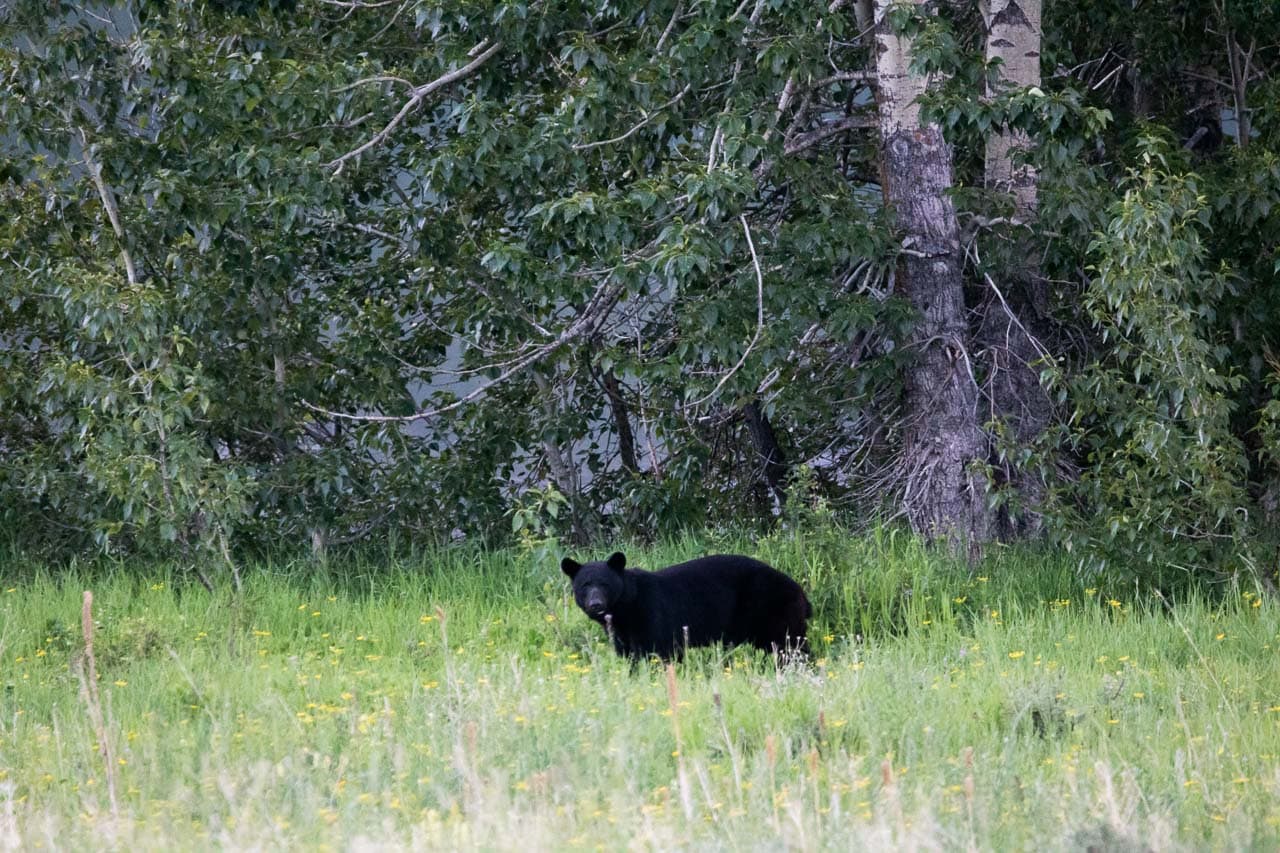
Behavior and Temperament
Aggression and Defense
Grizzly bears are generally more aggressive and territorial than black bears. This is partly due to their larger size and competition for food in open landscapes.
If threatened, a grizzly is more likely to stand its ground and even charge an opponent rather than flee. Mother grizzlies are particularly defensive of their cubs and have been known to attack perceived threats without hesitation.
Black bears, on the other hand, are more timid and likely to avoid confrontation. When faced with danger, a black bear will often retreat up a tree or run away. However, if cornered or protecting cubs, they can be aggressive.
Climbing and Swimming
Black bears are excellent climbers due to their shorter, curved claws. This ability allows them to escape predators or search for food in trees. Grizzlies, with their longer, straighter claws, are less adept at climbing but are stronger swimmers and are capable of traversing rivers and lakes.
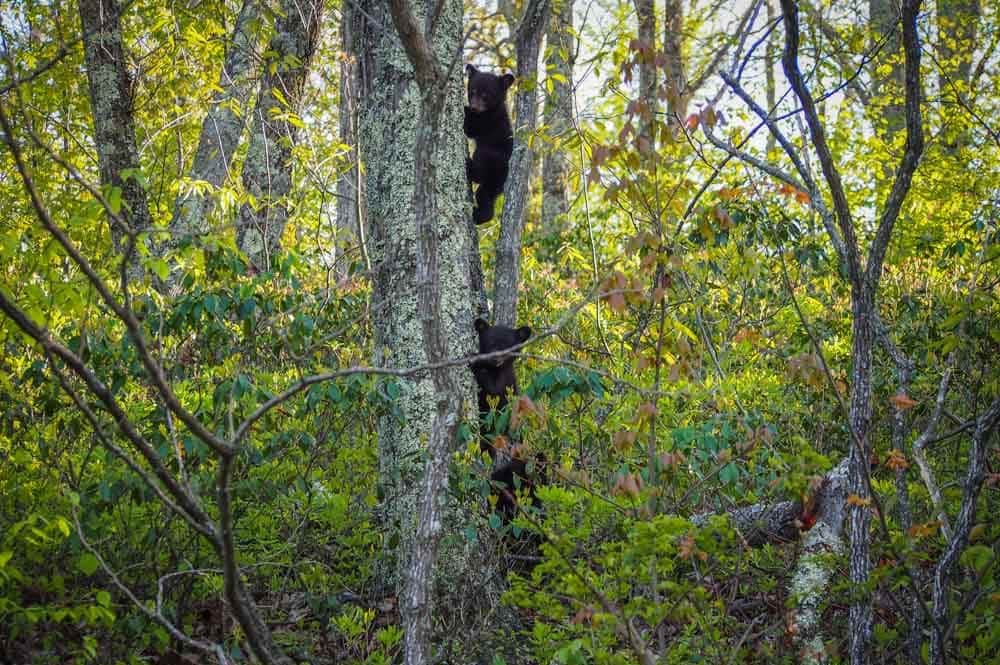
Human Interactions and Safety
Encounters with both black bears and grizzlies can occur in the wild, but the response should differ depending on the species.
- Black Bear Encounters: If you encounter a black bear, making yourself appear larger, making noise, and slowly backing away are usually effective deterrents. Playing dead is NOT recommended with black bears, as they are more likely to see a non-responsive human as an easy meal. “If it’s black, fight back.”
- Grizzly Bear Encounters: With grizzlies, it is crucial to remain calm, avoid direct eye contact, and slowly back away without turning your back. If a grizzly charges, playing dead by lying on your stomach with hands protecting your neck is recommended, as it may lose interest once it perceives no threat. “If it’s brown, lie down.” Carrying bear spray is highly advised in areas with grizzly populations.
Learn more about what to do during a grizzly bear encounter.
Learn more about what to do during a black bear encounter.
Learn how to use bear spray correctly.
Conservation Status
Black bears are relatively abundant and not considered endangered. Their populations remain stable, though human encroachment and habitat destruction pose localized threats.
Grizzly bears, however, have faced significant population declines due to habitat loss and hunting. While they are protected in many areas, their populations remain vulnerable, particularly in the lower 48 states of the U.S. Conservation efforts are ongoing to ensure their survival and mitigate human-wildlife conflicts.
Learn more about the threats to grizzly bears and how you can help.
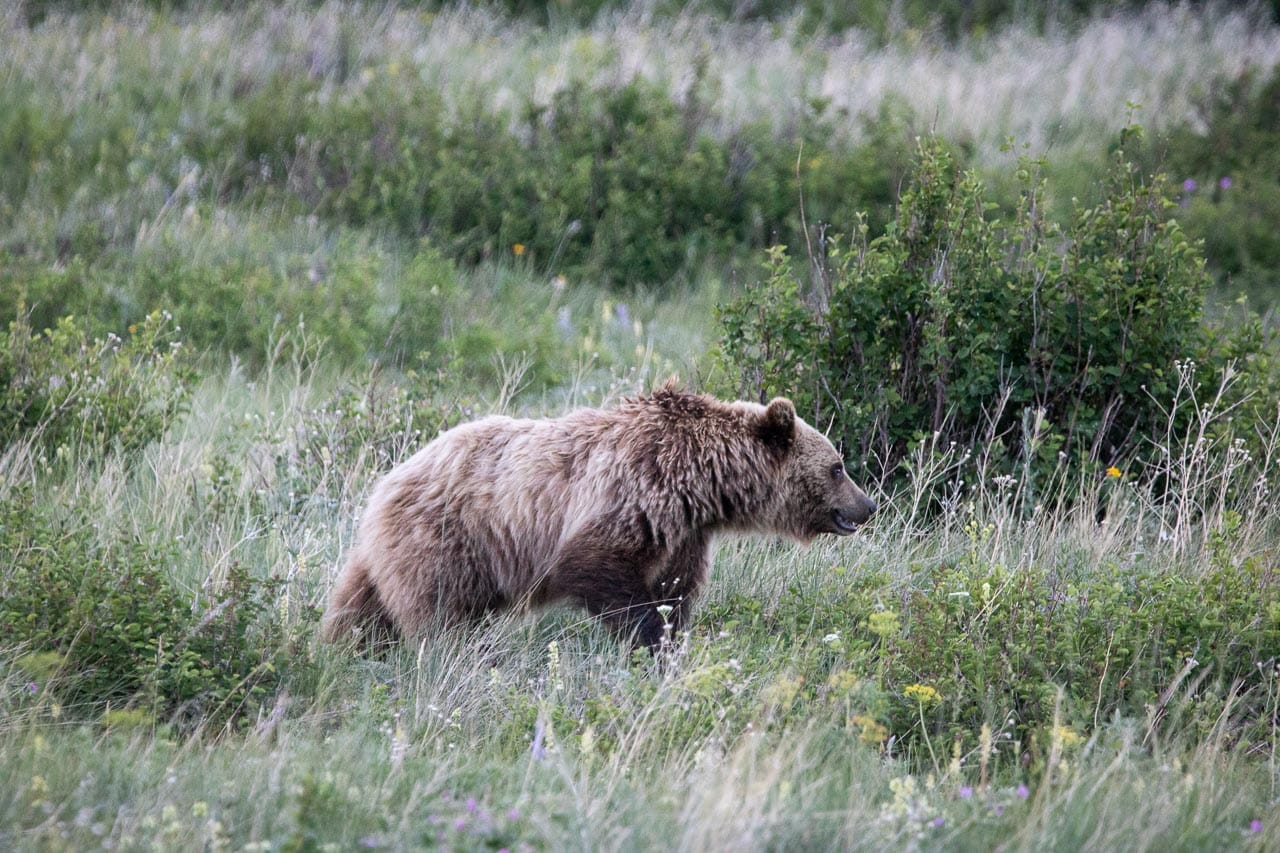
While black bears and grizzly bears share some similarities, their differences in size, habitat, diet, and behavior set them apart.
Knowing how to distinguish between the two species and understanding their behaviors is essential for wildlife enthusiasts and outdoor adventurers. With proper knowledge and precautions, humans and bears can coexist safely in their shared environments.







